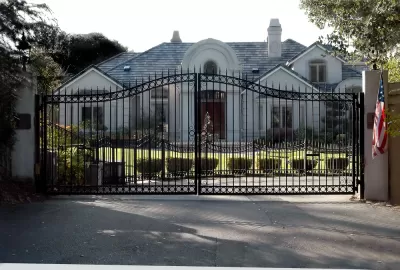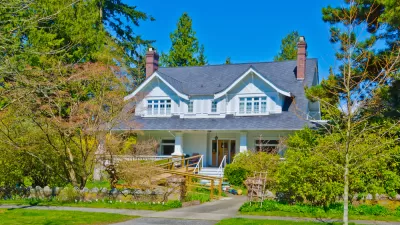"And you know why they made the new twenties? Cause I got all the old ones."

Inequity in the United States continues to grow, and that inequity is increasingly generational. Older Americans own the lion's share of homes and properties, and as the value of these properties increases, so does the wealth gap.
Politicians talk a fair amount about income inequality, but wealth inequality, which includes not just wages but also the value of properties and investments, paints a starker picture of further inequality. Over the past few decades that inequity has become increasingly a difference between the old and young. "Since 1989, all of the net increase in wealth has been experienced by households now aged 65 and older. The wealth of those aged 55 to 64 is essentially the same is in 1989 (up just 3 percent); those under 55 are decidedly poorer; the average wealth of those 35 to 44 is 43 percent less than in 1989, and for those 45 to 54, is 33 percent less than in 1989," Joe Cortright writes for CityObservatory.
A lot of this disparity is driven by the value of homes, because a home is the largest asset that many households have. As the value of homes went up, it drove wealth to homeowners who had owned their properties for long enough to benefit from that increase. "In short, younger adults have seen their housing equity shrink precipitously, while older Americans have experienced a rapid increase in their housing equity," Cortright reports.
FULL STORY: Gerontopoly: Homeownership, wealth, and age

Maui's Vacation Rental Debate Turns Ugly
Verbal attacks, misinformation campaigns and fistfights plague a high-stakes debate to convert thousands of vacation rentals into long-term housing.

Planetizen Federal Action Tracker
A weekly monitor of how Trump’s orders and actions are impacting planners and planning in America.

San Francisco Suspends Traffic Calming Amidst Record Deaths
Citing “a challenging fiscal landscape,” the city will cease the program on the heels of 42 traffic deaths, including 24 pedestrians.

Defunct Pittsburgh Power Plant to Become Residential Tower
A decommissioned steam heat plant will be redeveloped into almost 100 affordable housing units.

Trump Prompts Restructuring of Transportation Research Board in “Unprecedented Overreach”
The TRB has eliminated more than half of its committees including those focused on climate, equity, and cities.

Amtrak Rolls Out New Orleans to Alabama “Mardi Gras” Train
The new service will operate morning and evening departures between Mobile and New Orleans.
Urban Design for Planners 1: Software Tools
This six-course series explores essential urban design concepts using open source software and equips planners with the tools they need to participate fully in the urban design process.
Planning for Universal Design
Learn the tools for implementing Universal Design in planning regulations.
Heyer Gruel & Associates PA
JM Goldson LLC
Custer County Colorado
City of Camden Redevelopment Agency
City of Astoria
Transportation Research & Education Center (TREC) at Portland State University
Jefferson Parish Government
Camden Redevelopment Agency
City of Claremont





























